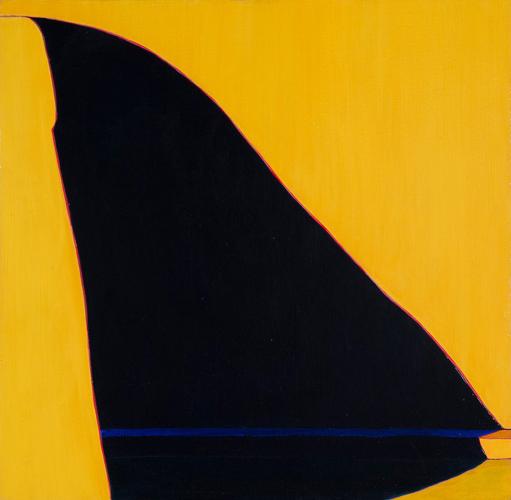Some artists teach us to see by going against the grain. Harold Joe Waldrum (1934-2003) was one of those artists. In his paintings and prints, adobe buildings can appear blood red, golden yellow, or a soft glowing pink, partially obscured by shadows that take on almost corporeal forms. In those shadows, Waldrum used touches of green, red, blue, and other colors to outline and accentuate shapes, inviting the viewer to look harder and see more. The artist saw colors and shapes that were really there in the world around him, as evidenced by hundreds of Polaroid photographs he shot, and he brought those forms into his work with an intensity that, like his life, was heightened by sharp contrasts of darkness and light.
“This looks like normal New Mexico stuff,” Waldrum’s friend and former collaborator, master printer Michael Costello, said of the artist’s work. “There’s a whole genre of it. But nobody did it quite like Joe did. Nobody gets close. People try, but they don’t see it the same way, I guess. It appears fairly simple, but it’s just not.” A small-scale retrospective of two-dimensional works by Waldrum opens on Friday, June 23, at Gerald Peters Gallery. The occasion marks a homecoming of sorts for the artist, whom the gallery once represented. “It was a nice opportunity to have someone who had shown here while they were active and living come full circle,” said gallery director Evan Feldman. The show, which includes about 25 of Waldrum’s works, was drawn from more than 600 pieces from the portion of the artist’s estate that went to his children Christopher and Ruanna Waldrum. The exhibit includes acrylic paintings, aquatint etchings, drawings, linocuts, and lithographs.
Waldrum, according to those who knew him, was a larger-than-life figure and an iconoclast in his work, although he didn’t always appear that way. He was an artist who removed his person from the art world but never his art, preferring to live a rustic lifestyle off the grid. He could be a challenging figure because, according to Costello, he always stuck to his guns. It was an attitude that sometimes got him into a fix. “At some point he lived out in the sticks near Pecos somewhere,” Costello said. “He got into trouble because he was the only Anglo there, in kind of a difficult town. A lot of these towns back then, and even now if you get way out there, people have their own way. They don’t like outsiders. Joe didn’t care. It was cheap out there, and he liked living that way. He got on the wrong side of people that were drug dealers and heroin addicts, and they wanted to run him out of town. They burned his house down while he was still inside it. He shot one of them because they were trying to kill him. That’s the type of stuff that would happen to him, because he would never back down.”




